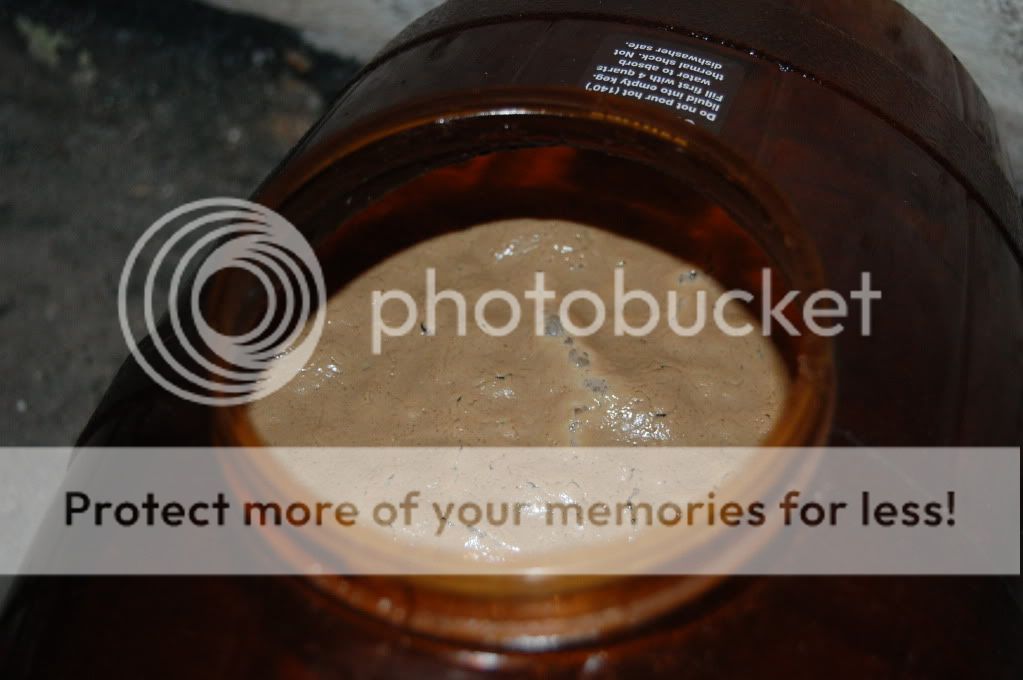El_Exorcisto
Well-Known Member
Not a Lambic or Flanders, but about as wild a brew as it gets. I read the wild yeast thread cover to cover twice, but something just didn't seem right. For over five centuries the farmers of Wollonia have been brewing their Saisons with the yeast available to them, and I am fairly certain that agar plates weren't available, nor would they sacrifice a pint of their hard-won wort to get what was flying around in the air... Then it hit me, HONEY.
Honey is everything the agar plate is, without all the scientific method. It is somewhat immune to a lot of bacteria, almost all molds, but harbors yeast quite well. If you don't believe me, check out the white fog around the edges of the jar... It's a krausen.
So I took a little bit of my last batch of stout wort, added some honey, and airlocked it in a bottle. Beside it on the counter sat a mixture of a different honey, water, raisins, and some apple peel, also airlocked. After three days they are both actively fermenting and both smell and taste just barely alcoholic. The stout tester tastes vaguely of prunes, which is very new to me. So tonight I fired up the brewpot, and am doing two gallons in my old MR. BEER. Two pounds of Malteurop two-row, a lb of Briess wheat malt, and another quarter pound of the more prolific honey from the stout starter. I'll hop with some cascades, lightly of course. The two starters are sitting in the fermentor, along with the honey, waiting for dinner to be served.
I'm mashing right now, and will have the OG later on tonight. Once I see some activity I'll have some pics to post. Hopefully it turns out into something worth drinking, maybe even doing again.
Honey is everything the agar plate is, without all the scientific method. It is somewhat immune to a lot of bacteria, almost all molds, but harbors yeast quite well. If you don't believe me, check out the white fog around the edges of the jar... It's a krausen.
So I took a little bit of my last batch of stout wort, added some honey, and airlocked it in a bottle. Beside it on the counter sat a mixture of a different honey, water, raisins, and some apple peel, also airlocked. After three days they are both actively fermenting and both smell and taste just barely alcoholic. The stout tester tastes vaguely of prunes, which is very new to me. So tonight I fired up the brewpot, and am doing two gallons in my old MR. BEER. Two pounds of Malteurop two-row, a lb of Briess wheat malt, and another quarter pound of the more prolific honey from the stout starter. I'll hop with some cascades, lightly of course. The two starters are sitting in the fermentor, along with the honey, waiting for dinner to be served.
I'm mashing right now, and will have the OG later on tonight. Once I see some activity I'll have some pics to post. Hopefully it turns out into something worth drinking, maybe even doing again.






